Adoption statistics may surprise you. According to the U.S. Adoption Network, nearly 199 million Americans have an adopted family member. They claim that over 113,000 children get adopted every year. Adoption can be a big step for a family. More so if the parents already have children of their own. It’s not just about the parents and the adoptee, then. One teenager shared her story of how she felt neglected by her parents with the Internet. The teen’s parents decided to adopt another teenage girl. While the girl wasn’t against the adoption per se, the way her parents failed to consider her feelings when making preparations for the new family member was not up to par. Wondering whether she was just being too sensitive, she decided to check with other netizens. Adopting is a wonderful way of giving a home to those who need it most, but parents should consider the feelings of the children they already have Image credits: Vanessa Loring / Pexels (not the actual photo) This daughter felt that her parents started to neglect her when planning to adopt another teenage girl Image credits: Pixabay / Pexels (not the actual photo) Image credits: Monstera Production / Pexels (not the actual photo) Image credits: Monstera Production / Pexels (not the actual photo) Image credits: i-like-good-sleep Image credits: Ketut Subiyanto / Pexels (not the actual photo) Parents who already have biological children should consider some things before the adoption The situation the teenager describes here sounds like the parents didn’t communicate as well with their children as they should have. A blended family consisting of both adopted and biological children can be a bit more difficult to manage. Before beginning the adoption process, parents should consider some things. Like the age order of the kids. For the existing kids in the family, it is always easier when a new sibling is younger than them because that correlates with the natural progression of a family. Children develop their roles in the family naturally, and who’s the youngest and the eldest usually has significance in the formation of their identity. However, in this situation, the fact that the parents decided to adopt another teenage girl can be beneficial because kids who are closer in age might strike up a connection faster. Children usually look up to parents for guidance on how to react. If parents set the right tone, the children are more likely to respond positively. Allan Josephson, professor of child and adolescent psychiatry at the University of Louisville School of Medicine, told ABC News: “If you have parents who say, ‘Look, this is how our family came to be,’ the kids will accept it.” He went on: “The main thing that leads to success is the commitment of parents that these children are theirs, no matter how they were conceived.” The existing children should also be familiar with the adoption process. If the kids are young, the best way to introduce the idea is through media: books, movies, or games. Parents should let their kids express their opinions about adoption. After all, they’re members of the family, too. Experts also advise normalizing any feelings the children may have throughout the whole process. When the kids get involved in the process, they might warm up to the idea more easily. Adoption agencies recommend taking children together to pick out toys, furniture, and other things for the new family member. They may also write letters or draw pictures for the new family member. Involving them in meetings with the prospective adoptee can also help them foster a better connection. The next piece of advice is perhaps one that these parents failed to consider – avoiding favoritism. No child should get preferential treatment, not the adoptee and not the biological children. Whether it’s about chores, doling out praise, or discipline, rules should apply to all kids equally. That way, parents can avoid one of the kids building resentment against the other. Finally, even when adopting, parents should expect the children to have a normal sibling relationship. And that includes occasional bouts of rivalry. Image credits: cottonbro studio / Pexels (not the actual photo) Adopting a teenager might be more challenging than adopting an infant Josephson also told ABC News that when parents adopt kids at a young age, the family may blend seamlessly. “If they’re adopted at infancy these types of blended families can almost have no differences when compared with biological families.” And while that is why most families adopt babies or toddlers, many teenagers need homes, too. Adoption UK reports that families with adopted children aged 13 to 25 say they’re “at a crisis point.” Experts explain that it’s because many adopted people have experienced trauma in early childhood. Some feel a loss of identity due to separation from their biological parents at such a young age. “Most adopted children have a very tough start in life, and many require specialist, therapeutic support into adulthood,” Chief Executive Officer of Adoption UK Emily Frith said. That’s why the agency emphasizes it’s paramount that families with adopted children seek support during the adopted child’s teenage years. “Many of the normal challenges faced by teenagers, such as grappling with their identity, relationships and mental health, are greatly heightened in children who have experienced trauma early in their lives,” they explain. Tracy Duncans, an adoptive mother to a teenager, shared her experience of raising a daughter born in the system. She believes that teens, more than any other age group, need adopting, as kids at that age crave guidance, love, and support. “They may make it very challenging to support them while they ‘test the waters’ of your commitment to them.” “However, they all need that port in the storm, someone they can turn to even as they venture out (as all young adults do) to find their own path. Adopting a teenager gives them that place to go to for advice, reassurance, and acceptance. If you can make a commitment to a teenager, you WILL change his or her future – and that helps all of us.” People in the comments sided with the daughter and said the parents could’ve handled the situation better The post “AITA For Not Wanting My Parents To Adopt Another Teenage Girl?” first appeared on Bored Panda.“AITA For Not Wanting My Parents To Adopt Another Teenage Girl?”
Adoption statistics may surprise you. According to the U.S. Adoption Network, nearly 199 million Americans have an adopted family member. They claim that over 113,000 children get adopted every year. Adoption can be a big step for a family. More so if the parents already have children of their own. It’s not just about the parents and the adoptee, then.
One teenager shared her story of how she felt neglected by her parents with the Internet. The teen’s parents decided to adopt another teenage girl. While the girl wasn’t against the adoption per se, the way her parents failed to consider her feelings when making preparations for the new family member was not up to par. Wondering whether she was just being too sensitive, she decided to check with other netizens.
Adopting is a wonderful way of giving a home to those who need it most, but parents should consider the feelings of the children they already have
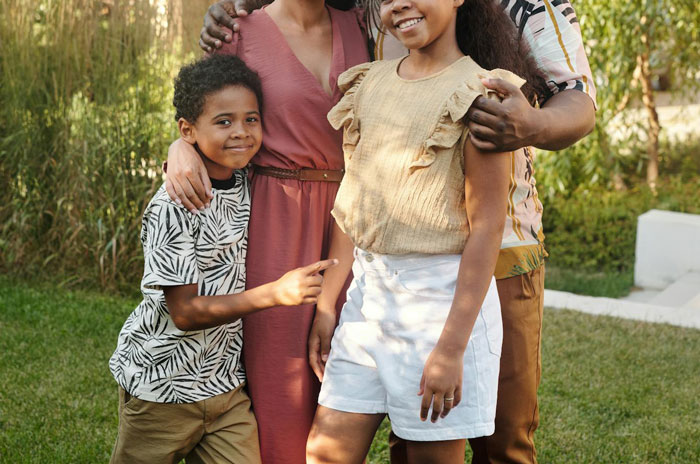
Image credits: Vanessa Loring / Pexels (not the actual photo)
This daughter felt that her parents started to neglect her when planning to adopt another teenage girl
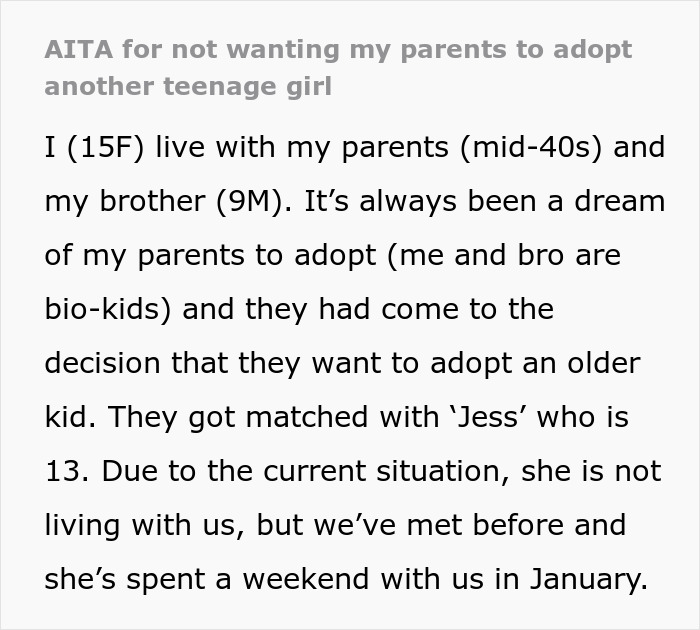

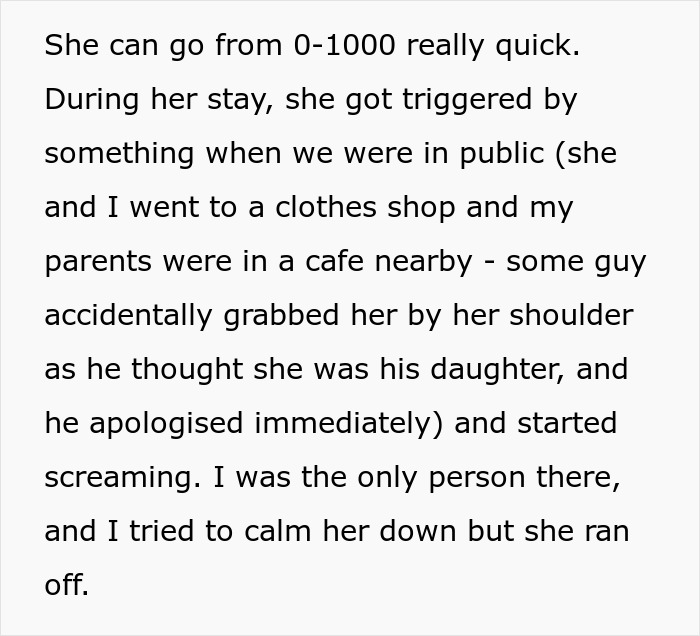
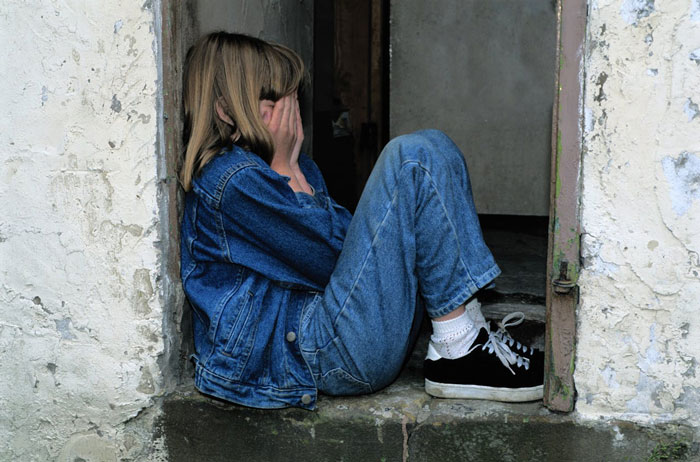
Image credits: Pixabay / Pexels (not the actual photo)
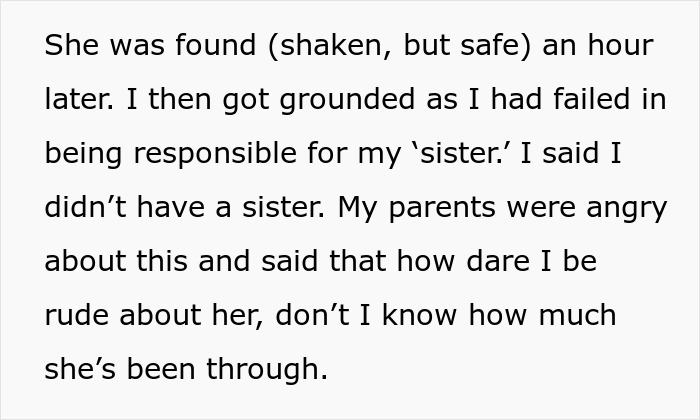
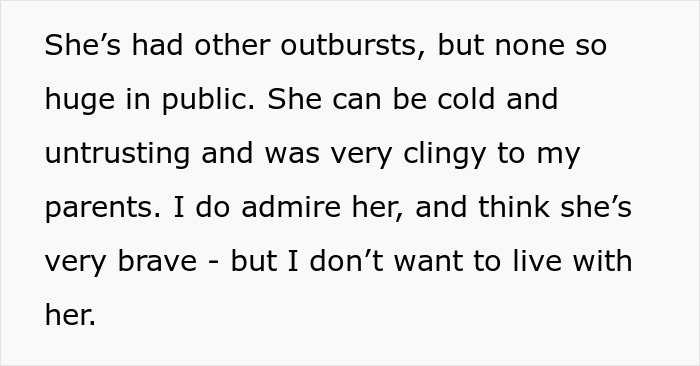
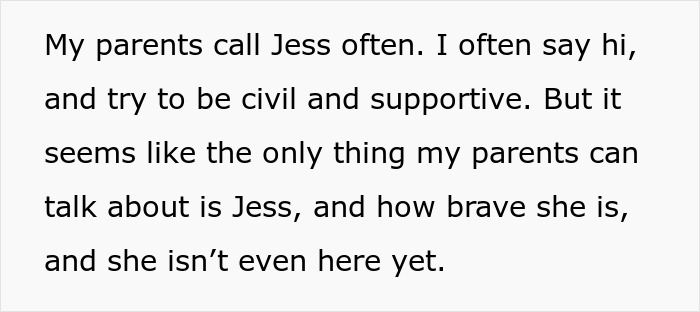
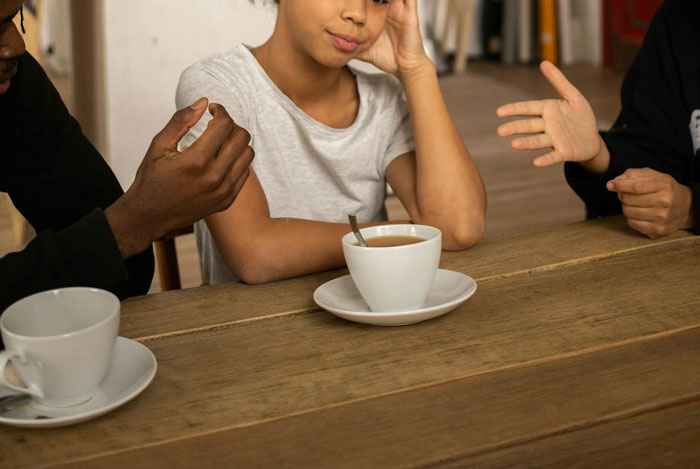
Image credits: Monstera Production / Pexels (not the actual photo)
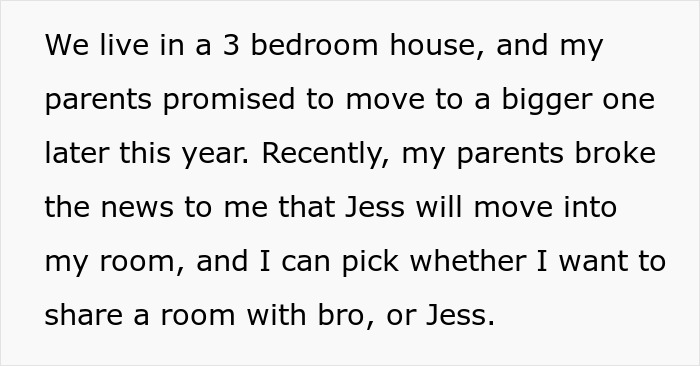
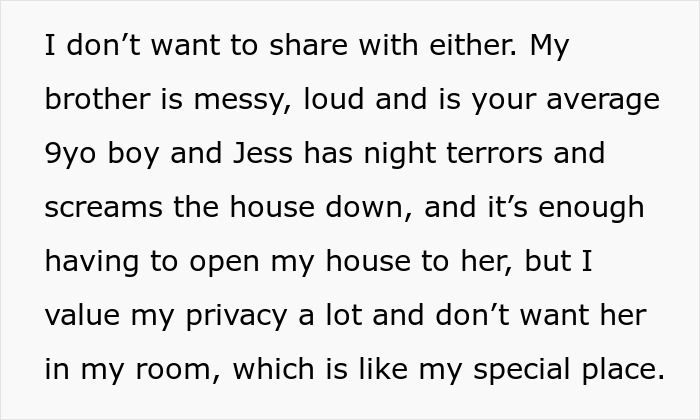
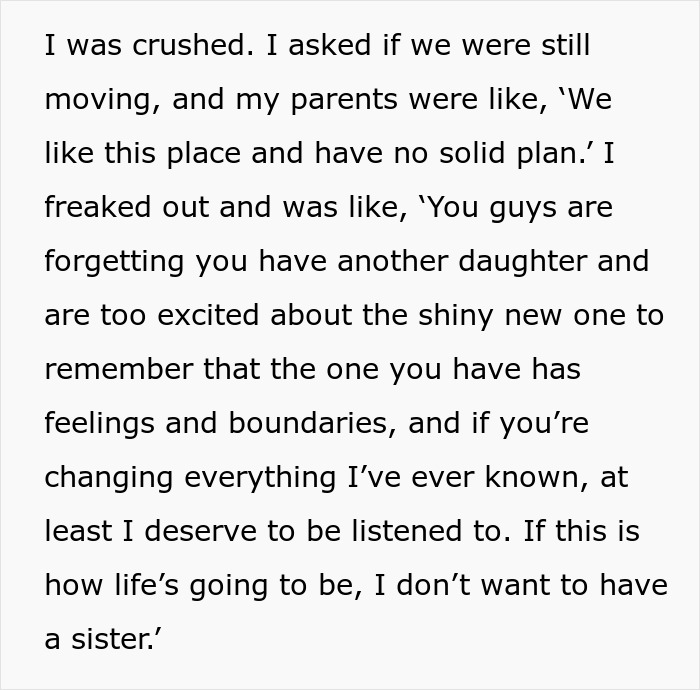
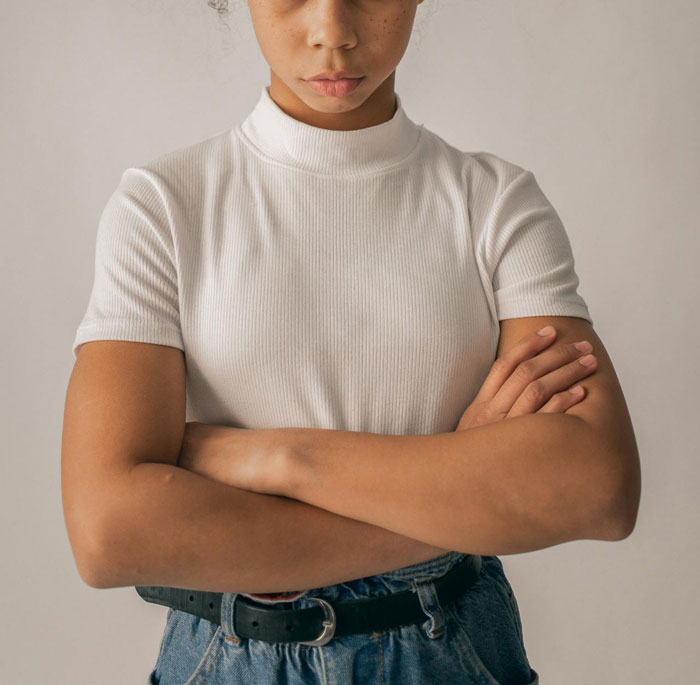
Image credits: Monstera Production / Pexels (not the actual photo)
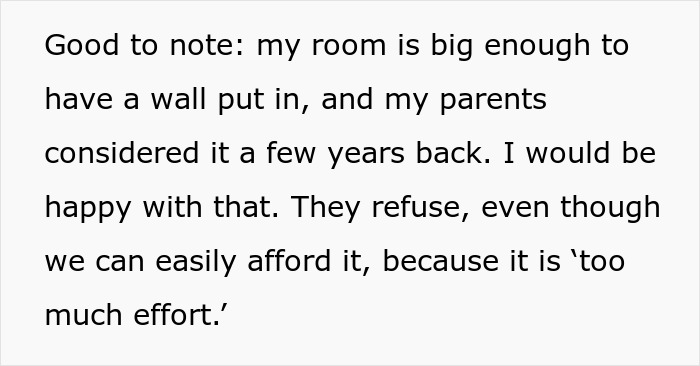
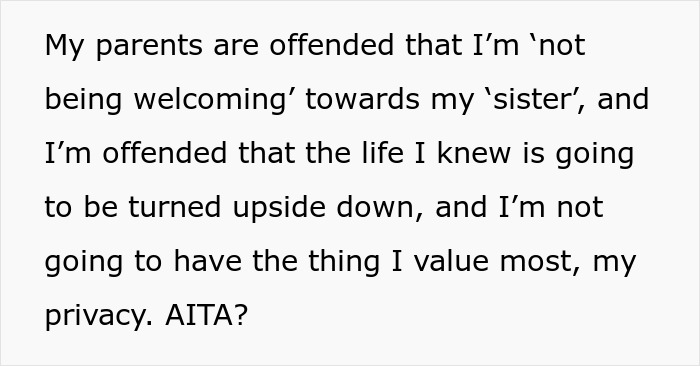
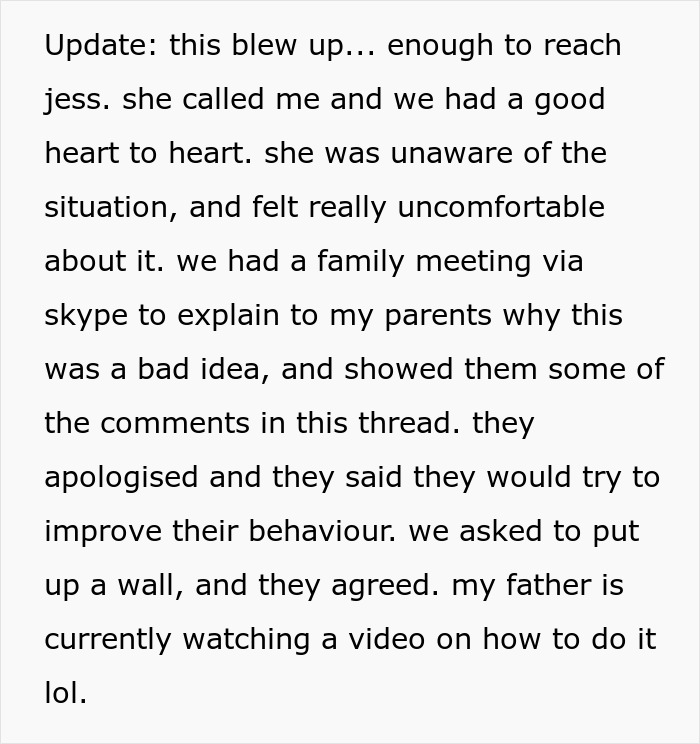
Image credits: i-like-good-sleep
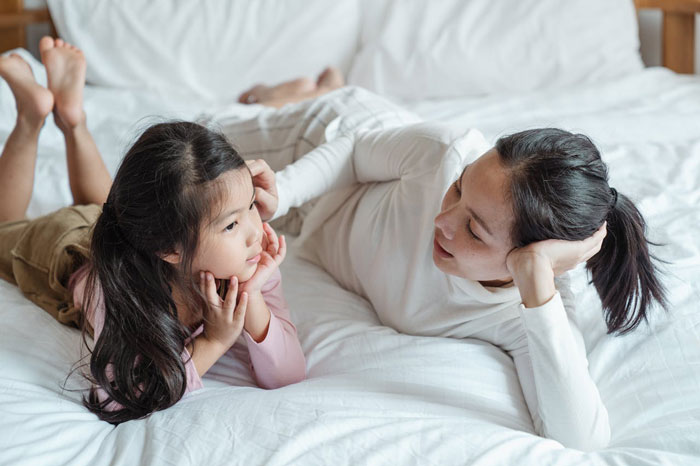
Image credits: Ketut Subiyanto / Pexels (not the actual photo)
Parents who already have biological children should consider some things before the adoption
The situation the teenager describes here sounds like the parents didn’t communicate as well with their children as they should have. A blended family consisting of both adopted and biological children can be a bit more difficult to manage. Before beginning the adoption process, parents should consider some things.
Like the age order of the kids. For the existing kids in the family, it is always easier when a new sibling is younger than them because that correlates with the natural progression of a family. Children develop their roles in the family naturally, and who’s the youngest and the eldest usually has significance in the formation of their identity. However, in this situation, the fact that the parents decided to adopt another teenage girl can be beneficial because kids who are closer in age might strike up a connection faster.
Children usually look up to parents for guidance on how to react. If parents set the right tone, the children are more likely to respond positively. Allan Josephson, professor of child and adolescent psychiatry at the University of Louisville School of Medicine, told ABC News: “If you have parents who say, ‘Look, this is how our family came to be,’ the kids will accept it.” He went on: “The main thing that leads to success is the commitment of parents that these children are theirs, no matter how they were conceived.”
The existing children should also be familiar with the adoption process. If the kids are young, the best way to introduce the idea is through media: books, movies, or games. Parents should let their kids express their opinions about adoption. After all, they’re members of the family, too. Experts also advise normalizing any feelings the children may have throughout the whole process.
When the kids get involved in the process, they might warm up to the idea more easily. Adoption agencies recommend taking children together to pick out toys, furniture, and other things for the new family member. They may also write letters or draw pictures for the new family member. Involving them in meetings with the prospective adoptee can also help them foster a better connection.
The next piece of advice is perhaps one that these parents failed to consider – avoiding favoritism. No child should get preferential treatment, not the adoptee and not the biological children. Whether it’s about chores, doling out praise, or discipline, rules should apply to all kids equally. That way, parents can avoid one of the kids building resentment against the other. Finally, even when adopting, parents should expect the children to have a normal sibling relationship. And that includes occasional bouts of rivalry.
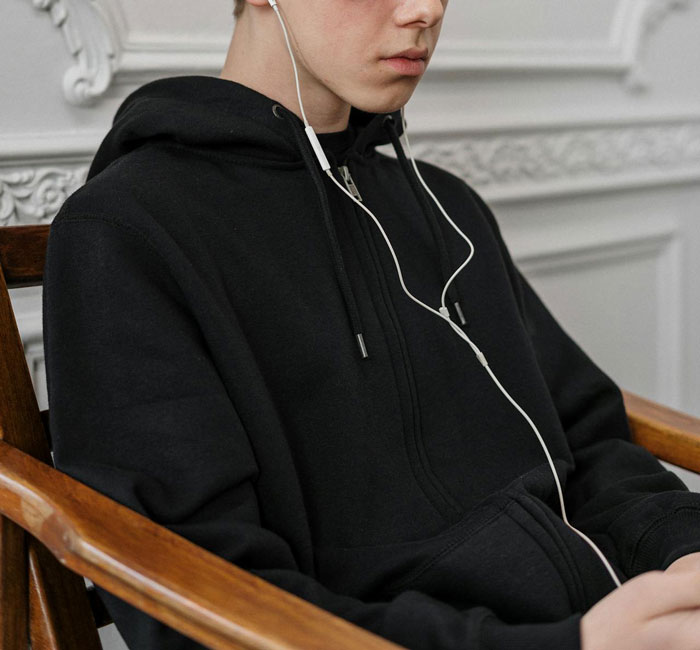
Image credits: cottonbro studio / Pexels (not the actual photo)
Adopting a teenager might be more challenging than adopting an infant
Josephson also told ABC News that when parents adopt kids at a young age, the family may blend seamlessly. “If they’re adopted at infancy these types of blended families can almost have no differences when compared with biological families.” And while that is why most families adopt babies or toddlers, many teenagers need homes, too.
Adoption UK reports that families with adopted children aged 13 to 25 say they’re “at a crisis point.” Experts explain that it’s because many adopted people have experienced trauma in early childhood. Some feel a loss of identity due to separation from their biological parents at such a young age. “Most adopted children have a very tough start in life, and many require specialist, therapeutic support into adulthood,” Chief Executive Officer of Adoption UK Emily Frith said.
That’s why the agency emphasizes it’s paramount that families with adopted children seek support during the adopted child’s teenage years. “Many of the normal challenges faced by teenagers, such as grappling with their identity, relationships and mental health, are greatly heightened in children who have experienced trauma early in their lives,” they explain.
Tracy Duncans, an adoptive mother to a teenager, shared her experience of raising a daughter born in the system. She believes that teens, more than any other age group, need adopting, as kids at that age crave guidance, love, and support. “They may make it very challenging to support them while they ‘test the waters’ of your commitment to them.”
“However, they all need that port in the storm, someone they can turn to even as they venture out (as all young adults do) to find their own path. Adopting a teenager gives them that place to go to for advice, reassurance, and acceptance. If you can make a commitment to a teenager, you WILL change his or her future – and that helps all of us.”
People in the comments sided with the daughter and said the parents could’ve handled the situation better

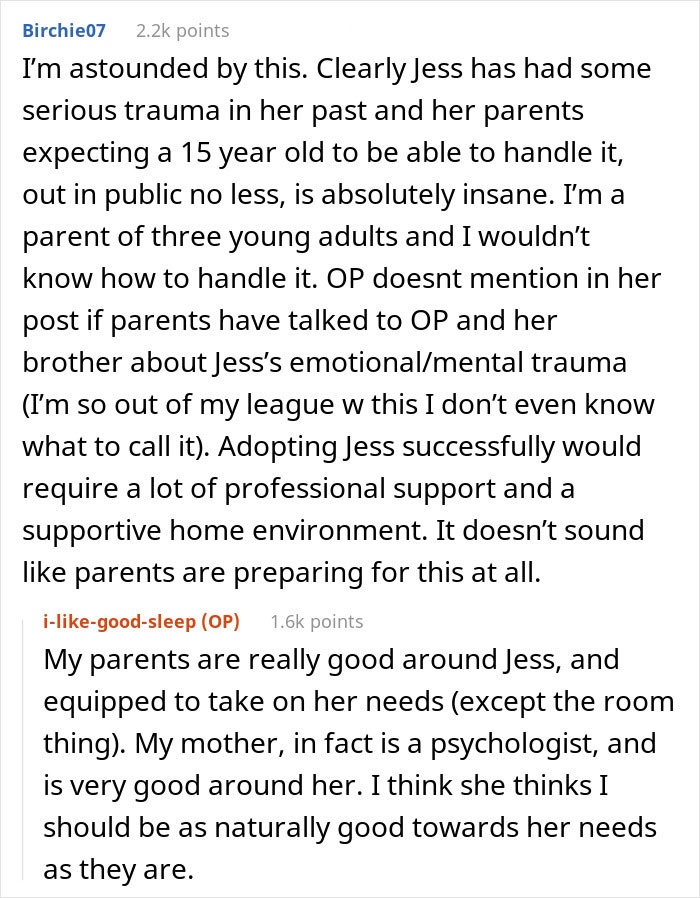
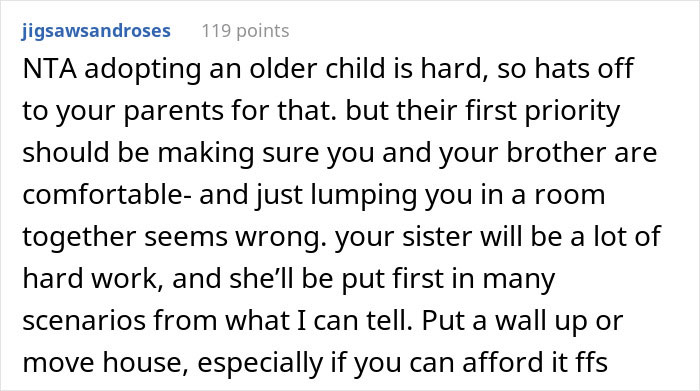
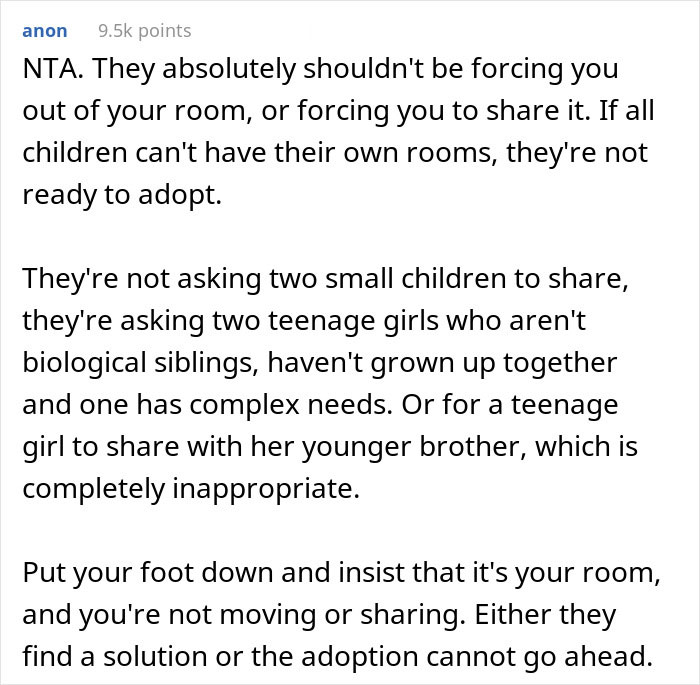
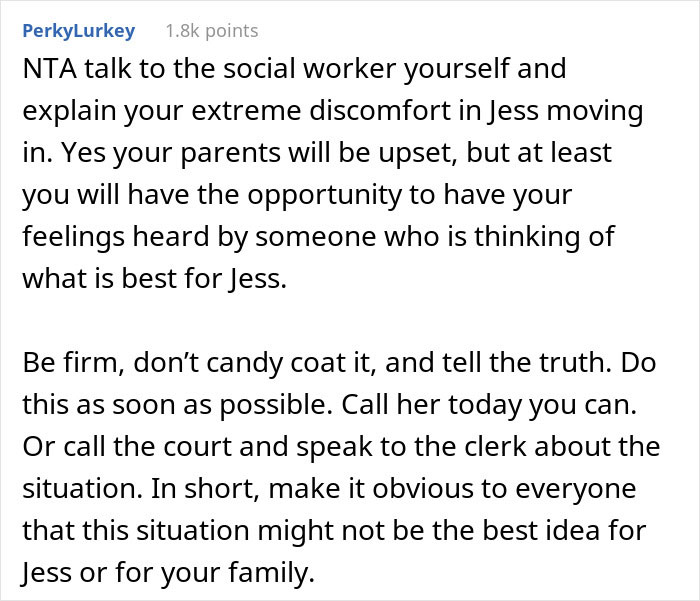
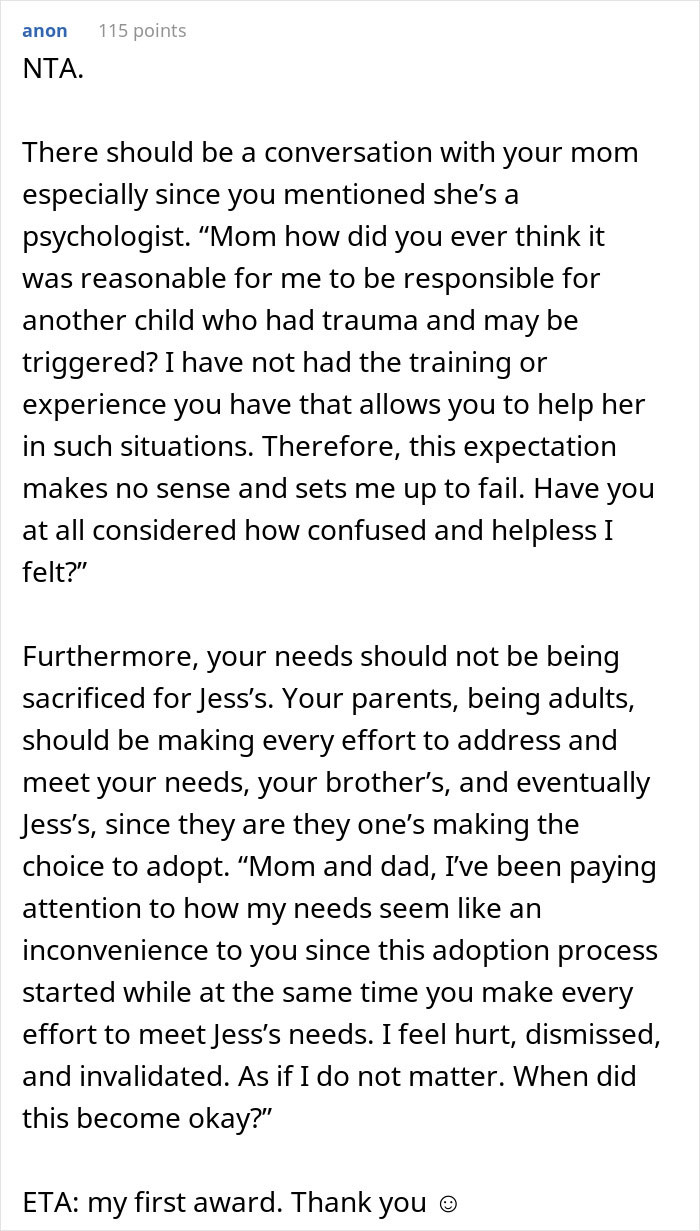

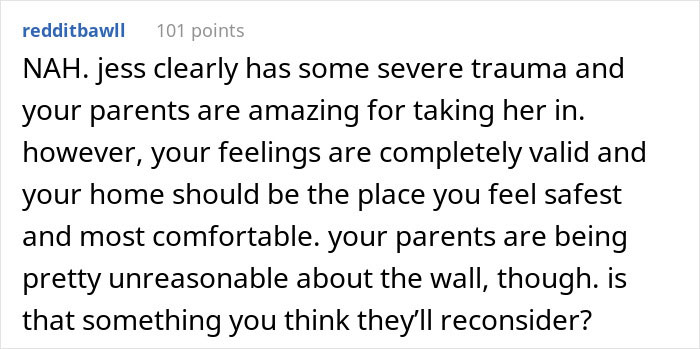
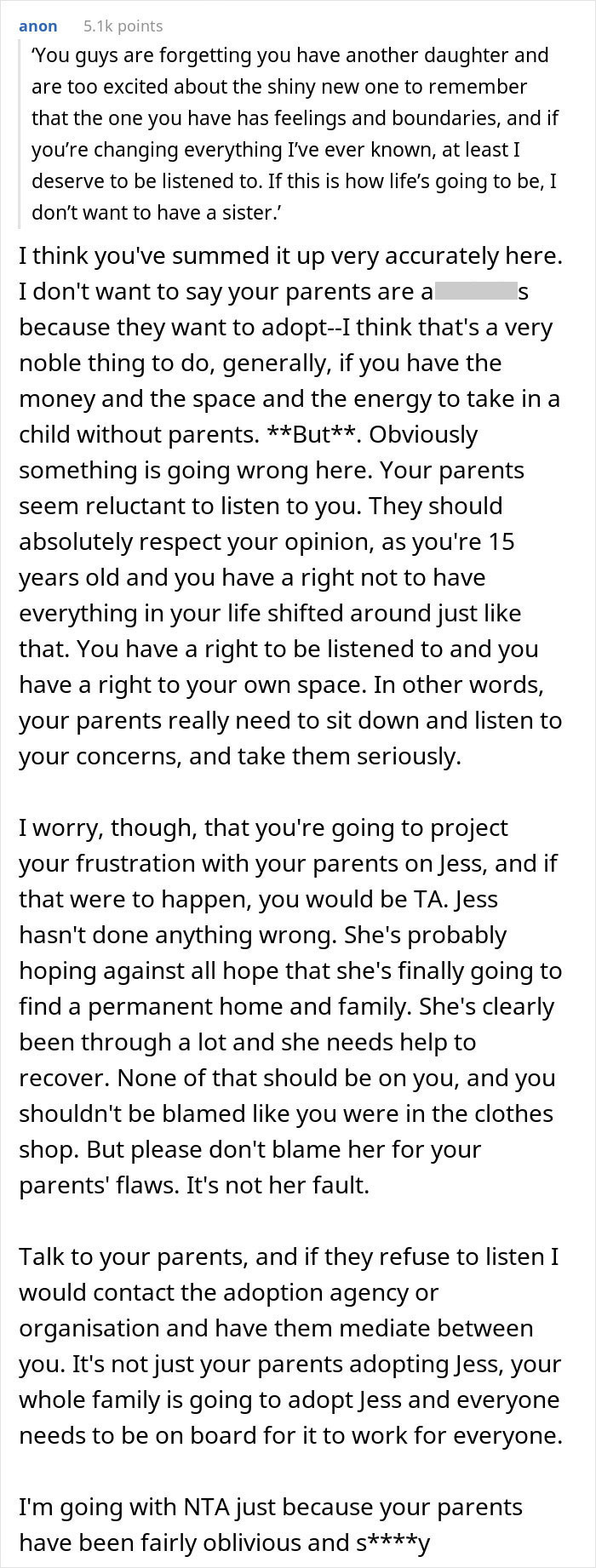
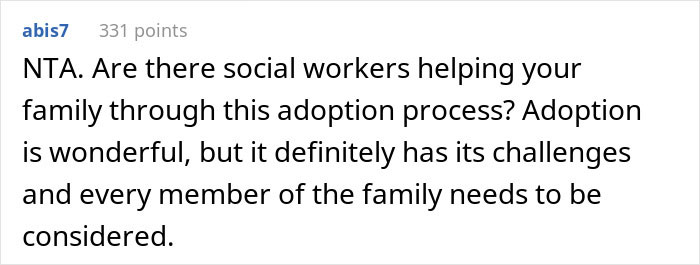

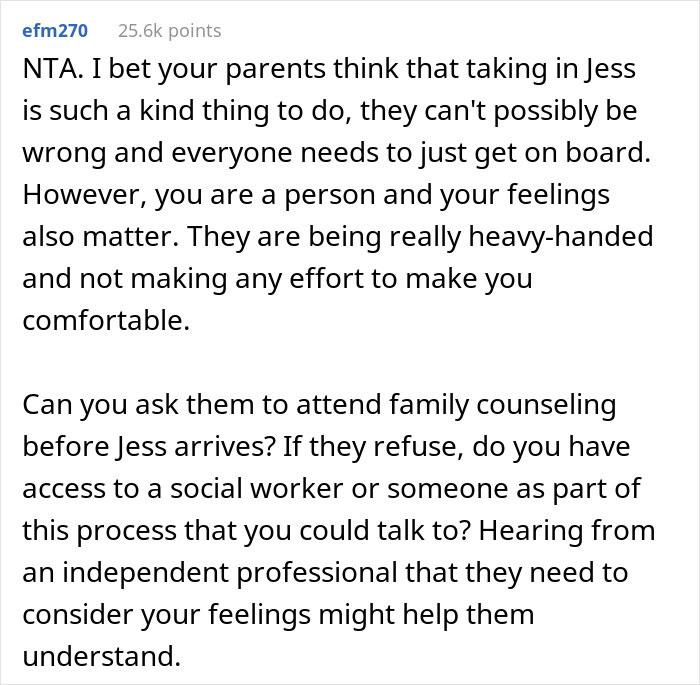

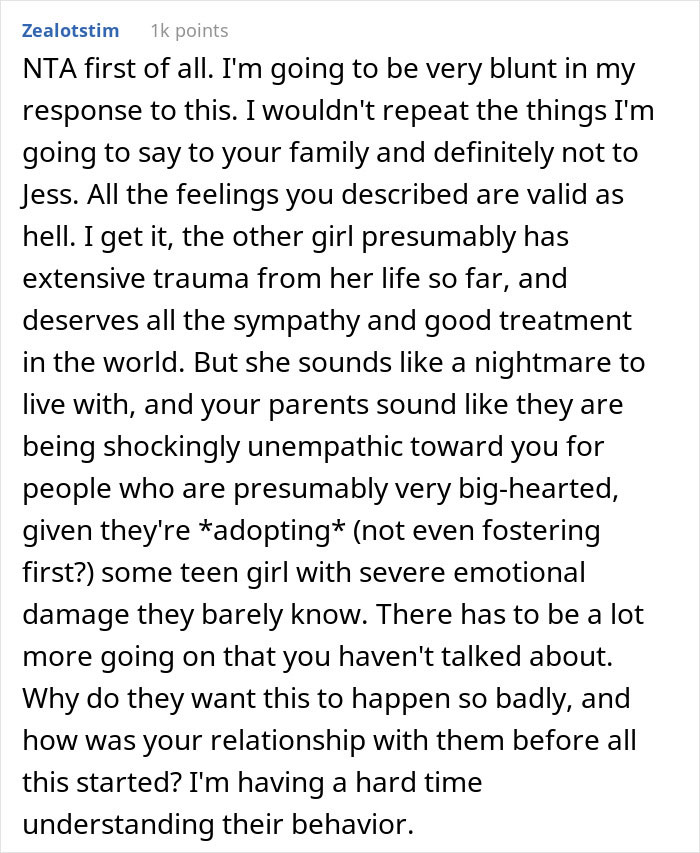

from Bored Panda https://ift.tt/JxAfR56




No comments: